
Halloween or Hallowe'en is a celebration observed in many countries on 31 October, the eve of the Western Christian feast of All Hallows' Day. It is at the beginning of the observance of Allhallowtide, the time in the liturgical year dedicated to remembering the dead, including saints (hallows), martyrs, and all the faithful departed. In popular culture, the day has become a celebration of horror, being associated with the macabre and supernatural.

Trick-or-treating is a traditional Halloween custom for children and adults in some countries. During the evening of Halloween, on October 31, people in costumes travel from house to house, asking for treats with the phrase "trick or treat". The "treat" is some form of confectionery, usually candy/sweets, although in some cultures money is given instead. The "trick" refers to a threat, usually idle, to perform mischief on the resident(s) or their property if no treat is given. Some people signal that they are willing to hand out treats by putting up Halloween decorations outside their doors; houses may also leave their porch lights on as a universal indicator that they have candy; some simply leave treats available on their porches for the children to take freely, on the honor system.
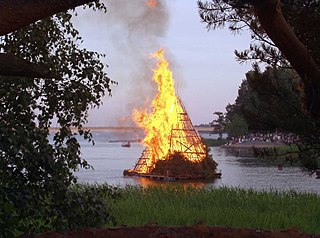
A bonfire is a large and controlled outdoor fire, used either for informal disposal of burnable waste material or as part of a celebration.
Devil's Night is a name associated with October 30, the night before Halloween, in Detroit, Michigan, US, and the surrounding area. It is related to "Mischief Night", an informal holiday involving pranks and minor vandalism. However, Devil's Night, especially from the late 1960s to the 1990s, involved widespread serious vandalism and arson in the Detroit area. The community responded by promoting "Angels' Night", a peaceful alternative. Beginning in the 1990s, the rate of arson began to fall, thanks in part to these community programs.

Poisoned candy myths are urban legends about malevolent strangers intentionally hiding poisons, drugs, or sharp objects such as razor blades in candy, which they then distribute with the intent of harming random children, especially during Halloween trick-or-treating. These myths, originating in the United States, serve as modern cautionary tales to children and parents and repeat two themes that are common in urban legends: danger to children and contamination of food.
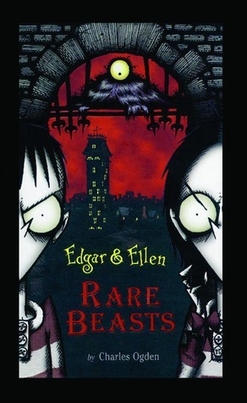
Edgar & Ellen is a book series and animated television series. Created by Simon & Schuster Children's Publishing, it is based on twelve-year-old orphaned twins who cause mischief and mayhem in their sickly sweet town, Nod's Limbs. The series currently contains nine books in addition to some side material. The twins' names are derived from American author and poet Edgar Allan Poe. Rare Beasts is the first book, followed by Tourist Trap, Under Town, Pet's Revenge, High Wire and Nod's Limbs, with a sequel series premiering just a year later, currently consisting of Hot Air, Frost Bites and Split Ends. The Mischief Manual, a book written in the voice of the twins themselves, hit the shelves in June 2007. A series of animated shorts premiered in 2006 and a weekly TV series premiered October 7, 2007 both on Nicktoons.
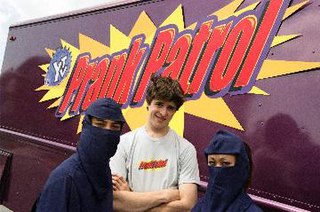
Prank Patrol is a Canadian children's television series that aired on YTV. Each episode, host André "Andy" Simoneau and a team of ninjas help kids pull off pranks on an unsuspecting victim, usually a friend or family member. With the help of experts, pranksters convince their victims that the events - such as the prankster possessing incredible super powers, alien landings, or an intelligent gorilla suddenly appearing - are real, until the process is revealed to the victims after a successful prank.
Knock, knock, ginger is a prank or game dating back to 19th-century England, or possibly the earlier Cornish traditional holiday of Nickanan Night. The game is played by children in many cultures. It involves knocking on the front door of a victim, then running away before the door can be answered.

A practical joke or prank is a trick played on people or people, generally causing the victim to experience embarrassment, perplexity, confusion, or discomfort. The perpetrator of a practical joke is called a "practical joker" or "prankster". Other terms for practical jokes include gag, rib, jape, or shenanigan. Some countries in western nations make it tradition to carry out pranks on April Fools' Day and Mischief Night.

"Treehouse of Horror XVIII" is the fifth episode of the nineteenth season of the American animated television series The Simpsons. It first aired on the Fox network in the United States on November 4, 2007. In the eighteenth annual Treehouse of Horror episode, Bart harbors Kodos the alien in "E.T., Go Home," Homer and Marge are husband and wife assassins who try to take each other out in "Mr. & Mrs. Simpson," and Ned Flanders is given God-like powers during his demonstration on the wages of sin in "Heck House." It was written by Marc Wilmore and directed by Chuck Sheetz. Maggie Simpson does not appear in this episode.
Beggars Night, or Beggars' Night, is a regional term for the practice of going "Trick or Treat" in the period before Halloween night. Beggars Night emerged to address security concerns over young children involved in unsupervised Trick-or-Treating. Instead, younger children were encouraged to Trick-or-Treat on another night, before Halloween. The chosen date for Beggars Night varies and is typically dependent on the day Halloween falls each year. Beggars Night typically begins after school and often concludes between 6 and 8 pm.

A soul cake, also known as a soulmass-cake, is a small round cake which is traditionally made for Halloween, All Saints' Day and All Souls' Day to commemorate the dead in many Christian traditions. The cakes, often simply referred to as souls, are given out to soulers who go from door to door during the days of Allhallowtide singing and saying prayers "for the souls of the givers and their friends", especially the souls of deceased relatives, thought to be in Purgatory. The practice in England dates to the medieval period, and was continued there until the 1930s. In Sheffield and Cheshire, the custom has continued into modern times. In Lancashire and in the North-east of England soul cakes were known as Harcakes, a kind of thin parkin.

Halloween is a celebration observed on October 31, the day before the feast of All Hallows, also known as Hallowmas or All Saint's Day. The celebrations and observances of this day occur primarily in regions of the Western world, albeit with some traditions varying significantly between geographical areas.
A prank call is a telephone call intended by the caller as a practical joke played on the person answering. It is often a type of nuisance call. It can be illegal under certain circumstances.
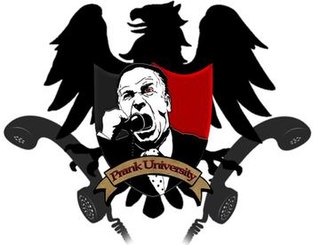
Pranknet, also known as Prank University, was an anonymous prank calling virtual community that was involved in a string of malicious pranks and instances of telephone harassment, especially during 2009–2011. Their pranks were coordinated through an online chat room, and convinced others to cause damage to hotels and fast food restaurants of more than $60,000. The group was founded by a man who later referred to himself as "Dex1x1", later identified as a Canadian named Tariq Malik. The group has been linked to nearly 60 separate incidents.
In 2019, 43,686 crimes were reported in the U.S. state of Michigan. Crime statistics vary widely by location. For example, Dearborn has a murder rate of only 2.1 per 100,000 while sharing borders with Detroit and Inkster, some of the highest rates in the state.
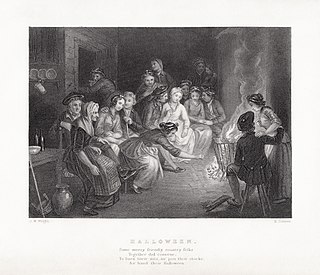
"Halloween" is a poem written by the Scottish poet Robert Burns in 1785. First published in 1786, the poem is included in the Kilmarnock Edition. It is one of Burns' longer poems, with twenty-eight stanzas, and employs a mixture of Scots and English.
"Oil & Water" is the sixth episode of the eleventh season of the American police procedural drama NCIS, and the 240th episode overall. It originally aired on CBS in the United States on October 29, 2013. The episode is written by Jennifer Corbett and directed by Tom Wright, and was seen by 19.30 million viewers.












